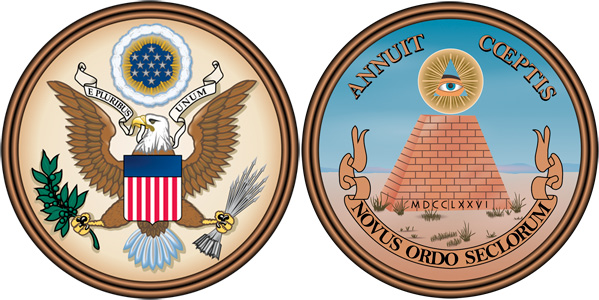National Symbols
Quick! What’s our national bird? Can you describe our nation’s Great Seal? Did you know we have a national tree? Check out these official symbols of the United States.

The Bald Eagle
After many conversations about appropriate symbols for the new nation, the Founding Fathers selected the bald eagle as the national bird in 1782. They believed the bald eagle captured the characteristics they were looking for: It was a creature native to the United States, and it symbolized freedom, courage, and strength.

The Great Seal
In the same year that the Continental Congress chose the bald eagle as the nation’s bird, 1782, it also approved an official seal for the country. It had taken six years and the incorporation of various ideas, however, before the final design emerged. A bald eagle flies on the obverse side of the seal facing to its right. In its mouth is a ribbon bearing the quote, E Pluribus Unum (Out of Many, One), and it grips 13 arrows (representing war) in its left talon and an olive branch (representing peace) in its right talon. In front of the eagle is a shield with 13 red and white vertical stripes, representing the original 13 states. The blue rectangular field across the top of the shield represents Congress. Above the eagle’s head floats 13 five-pointed white stars—a symbol of the new United States taking its place among other nations.
E Pluribus Unum
This Latin inscription, meaning “Out of Many, One,” was considered the unofficial national motto until 1956. That’s when “In God We Trust” became the national motto. E Pluribus Unum referred to the fact that from 13 individual states, one unified nation was made. Over time, as the United States became a land of opportunity for immigrants from around the world, the motto took on an additional meaning for some people—Americans can trace their roots to many cultures and nationalities, but we are one people.

The Pledge of Allegiance
I pledge allegiance to the Flag
of the United States of America,
and to the Republic for which it stands,
one Nation under God,
indivisible,
with liberty and justice for all.
The Pledge of Allegiance has gone through some changes since it was introduced in September 1892. That’s when Francis Bellamy’s original 23-word version appeared in The Youth’s Companion, a popular children’s publication. The idea was to get young people feeling patriotic and involved in the upcoming World’s Columbian Exposition in Chicago. President Benjamin Harrison approved its recitation in public schools during dedication ceremonies for the fair’s buildings on October 12, 1892. The pledge has been revised by the addition of words over the years and contested by some people for violating First Amendment rights. Officially recognized as the nation’s oath on June 22, 1942, the 31-word Pledge of Allegiance reminds Americans that we are a nation in which there is “liberty and justice for all.”

Trees and Flowers
Oak and elm trees have long been symbols of strength, endurance, and freedom in America’s history. Both trees live hundreds of years and grow to majestic sizes. With more than 60 species of oaks found throughout the United States, the oak was officially recognized as our national tree in 2004. In the time leading up to the Revolutionary War (1775–1783), the supposed “first” Liberty Tree—an elm—was located in Boston and served as a rallying symbol of freedom, justice, and an end to tyranny. In newspaper cartoons, the tree was often seen in the background as a pillar of strength in the colonists’ fight against Britain. During and after the war, many towns designated their own liberty trees to represent their hard-earned freedom.